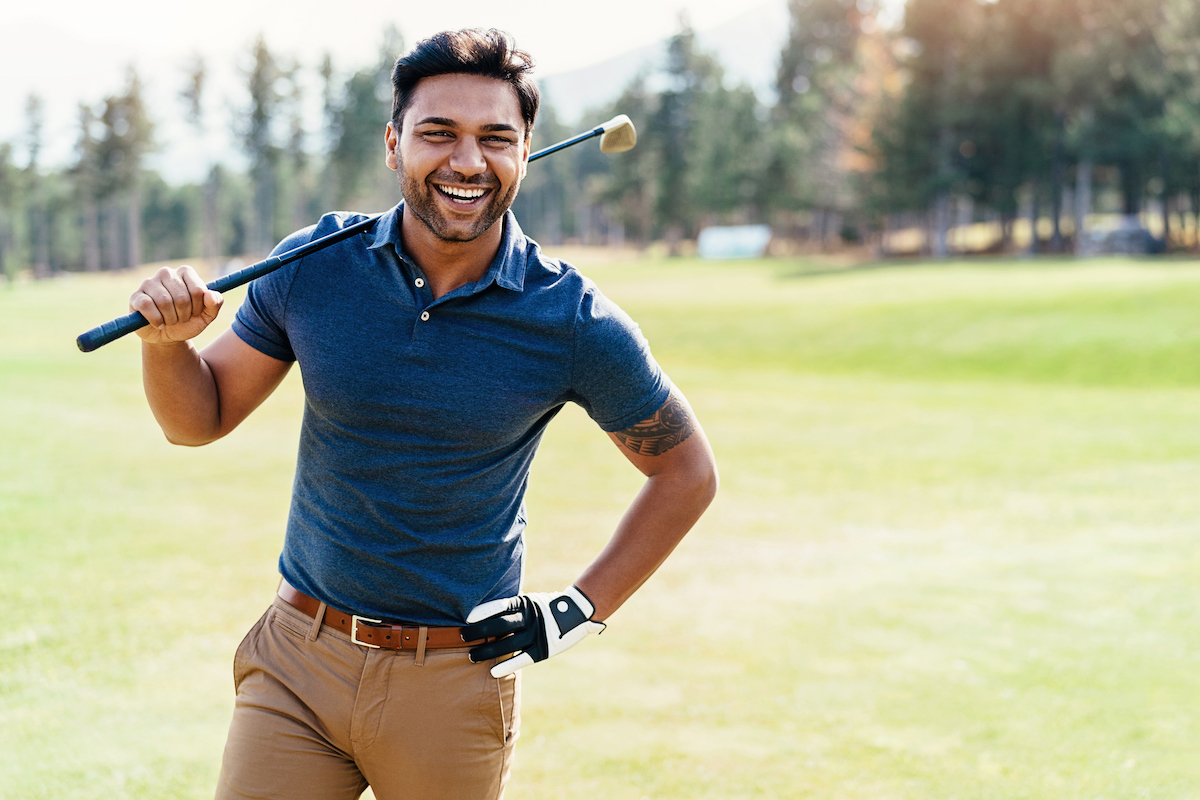<< Back
With New Golf Season in Sight, Make Sure You’re Ready

March 02, 2020
When the clocks change and the days get longer, golfers in the Northeast begin to look forward to starting a new season on the links.
After a long offseason, however, it’s important to make sure your body is ready to swing a club, especially if you have had surgery or been injured since the last time you played. Sarah Emlaw, DPT, of the Hartford HealthCare Rehabilitation Network and Bone & Joint Institute at Hartford Hospital, shares some important information to help golfers get back to the game they love.
Q: I am getting ready to get back out on the golf course following an injury/surgery. What are some things I should keep in mind when I begin practicing?
A: It is always recommended to discuss a return to golf with your doctor or physical therapist, especially after surgery. It may also be a good idea to consult with a golf pro for any technique modifications if needed. Our body is very good at compensating after injury or surgery. Therefore, a TPI (Titleist Performance Institute) movement screen and/or golf swing analysis can also be done to look closely for any compensatory mechanisms and appropriate mechanics. In any case, it is important to ease back into golf with a structured program that starts with chipping and putting, progresses into shorter irons, then longer irons and eventually woods/drivers. It is important to listen to your body and allow for adequate time to recover in between sessions.
Q: What are some good exercises to do to get golf-ready?
A: Every golfer is very different regarding their strengths and weaknesses, so some exercises may not be appropriate or as beneficial for everyone. One of the most important recommendations I give to golfers is to develop a good warmup to do BEFORE the driving range and before playing golf. There has been a lot a research coming out regarding the benefit of having a proper warm-up & exercise routine. Here are some general recommendations:
- Dynamic stretching, not static stretching.
- Pelvic tilts forward and back.
- Hip mobility into rotation – both directions, both legs.
- Single leg rotational stability.
- General core strengthening.
Q: How can I help prevent an injury early in the season?
A: Working with a professional (golf pro, fitness specialist, or physical therapist) certified in the TPI movement screen can identify limitations or deficits in your mobility and/or stability. Once identified, the professional can customize a program for you to work on to address the limitations in hopes to avoid injury down the road.
Q: What does a 3D golf swing analysis entail and how can it be used to help my swing?
A: The golfer is brought into our Motion Lab and set up with numerous reflective markers over different joints & reference points on the body (over tight-fitting clothing). Our 11-point infrared camera system records the retro reflective markers and the biomechanist uses several programs to recreate the exact motions of the golfer and club during the swing. The biomechanist is then able to break down joint mechanics, rotational torque, swing speed, kinematic sequence and weight shift to provide a comprehensive report for each golfer. Movement specialists are then able to analyze this data, relate it to research, the golfer’s TPI movement screen and 2D swing characteristics to create recommendations specific to the golfer. There is plenty of research supporting that a proper rehabilitative, warm-up and/or strength and conditioning program can improve maximum club head speed, driving distance, driving accuracy, ball trajectory, handicap and consistent ball strike.
To learn more about the TPI movement screen, 3D swing analysis and all of the golf medicine services that are offered by Hartford HealthCare, visit Sarah Emlaw and her team at their booth at the Connecticut Golf Show March 20-22 at the Convention Center in Hartford.
For more information about the golf medicine services that are offered at the Bone and Joint Institute, click here.